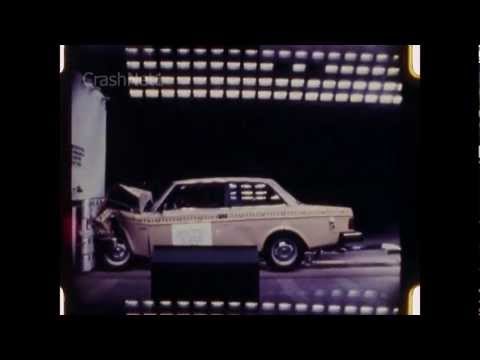The Volvo 240: How Safe is it Today?

A video of a 1982 Volvo 240 NHTSA crash test; the 240 was the best-performing vehicle NHTSA ever tested at that time.
Mention the Volvo 240, and words like “tank”, “indestructible”, and “safe” get thrown around a lot. Anecdotes of the 240 saving lives are everywhere, backed up by data showing that the 240 had the lowest fatality rate of any vehicle during the ’80s and ’90s. The 240 was tested by NHTSA in 1982, and it was the best performer. It went up against the crash barrier again in ’85, and once again, aced the test.
Not surprisingly, many still think it’s a safe car by modern standards. While it is true that the 240 was well ahead of its time on safety, the fact remains that the 240 design came out in 1974. While Volvo did make improvements to the 240’s safety throughout its 19-year production run (1974-1993) – such as improved seat belts starting in 1981 and a driver airbag in 1990 – it was still on largely the same 1970s-designed structure (in fact, the 240’s structure was a heavily updated version of its predecessor, the 140’s structure; the 140 was first sold in 1966).
Volvo is a company that values its safety leadership, and they replaced the 240 in 1992-1993 because competitors were beginning to catch up – the 240’s design, by then nearing two decades old, wasn’t going to cut it anymore. The 240 was tested by the IIHS in a 40-mph offset crash test (in 2002, many years after its discontinuation) and flunked; some of the better designs introduced in the final years of the 240’s life, such as the Toyota Camry and Ford Taurus (both redesigned in 1991 for the 1992 model year) did fairly well in this test. The 240 flunked because it was introduced 21 years before the offset crash test was introduced; designing a car structurally to pass an offset crash test wasn’t on any manufacturer’s radar in 1974, or until the early 1990s for that matter. If it flunked the moderate overlap, it would fail the much newer small overlap test as well. Ditto for the side impact test; while the 240’s side structure was very robust for a car of its era, the lack of any side airbags would mean that there is no head protection in case of a side impact involving a taller vehicle; the 240 would fail this test as well (introduced 29 years after its introduction).
The 240 lacks many important safety features, many of which weren’t even invented until after it went out of production. There is no electronic stability control (first introduced to ANY car in 1995), side curtain airbags (first introduced 1997), seat belt pretensioners, or even a passenger airbag. Only the last four years of production (1990-1993) have a driver airbag, and ABS was only standard in the last year of production (1993) and optional for two years before that (1991-1992).
The 240 deserves a great deal of respect as a car that was far ahead of its time on safety, that saved many lives in its day, and that served as a blueprint for the safety design of other cars to follow. But in 2021, it’s showing its age a little.






